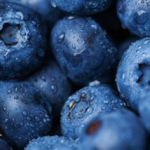Beans
Blood Sugar
The glycemic index measures the proliferation of glucose within the bloodstream. Foods with a low glycemic index, such as beans, are preferable for diabetics. This is especially true of those suffering from type 2 diabetes, who not only have less insulin to help metabolize sugars but are also more resistant to the insulin their body manages to produce. Chickpeas and lentils fall under this category as well. Patients who have eaten these foods on a regular basis have seen slight drops in blood sugar levels. The fact that these drops are relatively slight is actually important, as blood sugar should never get too high nor too low. In fact, one of the problems associated with elevated blood sugar levels is that large spikes often lead to significant drops, making levels difficult to manage.
Blood Pressure
Eating beans has been shown to lower blood pressure in sufferers of diabetes, normalizing systolic and diastolic readings to more normalized amounts. While the immediate benefits were not measurably great, they were good enough to suggest that daily consumption of beans might yield long-term results for diabetics. Since unmanaged diabetes can often lead to heart problems such as arrhythmia or even heart attacks, this is valuable knowledge for patients with diabetes who need a sustainable yet cost-effective plan for preventing the furtherance of symptoms.
Cholesterol
Beans are a primary source of fiber, which is a major component of dietary health concerns when considering the needs of patients who suffer from type 2 adult-onset diabetes. Not only can it help level out sugar contents in the blood, but it can also help greatly in regulating the digestive system. Eating beans can also help to raise HDL levels (or what is known as good cholesterol) while providing a source of nutrition that does not result in increased LDL (or bad cholesterol). Furthermore, despite the common conception of beans as “the musical fruit,” studies of diabetics have not shown any disruption of the GI tract caused by consumption of beans and other legumes. In fact, the fiber content and its positive effects on the digestive system can increase the health of the GI tract by a decent amount over time.Conclusion
One of the primary advantages of beans as a source of nutrition is that there are several different kinds, meaning that diabetics who use beans to enhance their diet do not have to worry about growing bored of the same tastes. Beans can be used in a variety of recipes with several other ingredients, thus maximizing opportunities to create nutritious entrees with varied tastes. Given their health benefits, increasing consumption of beans is a worthwhile effort for any diabetic patient to undertake.

























